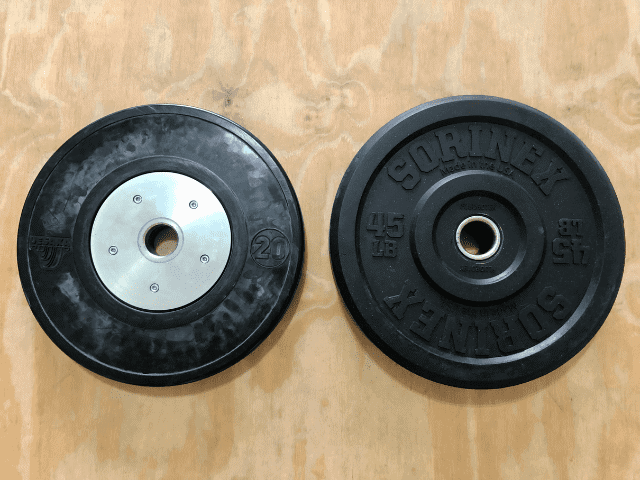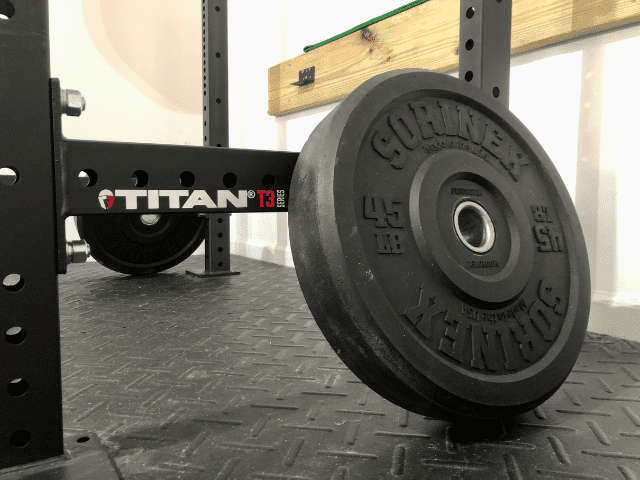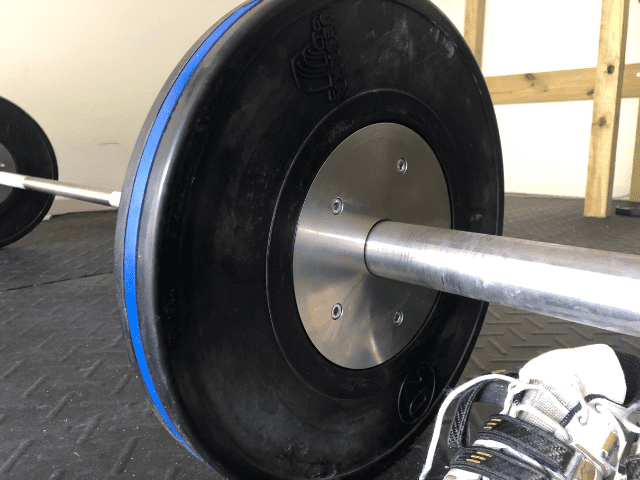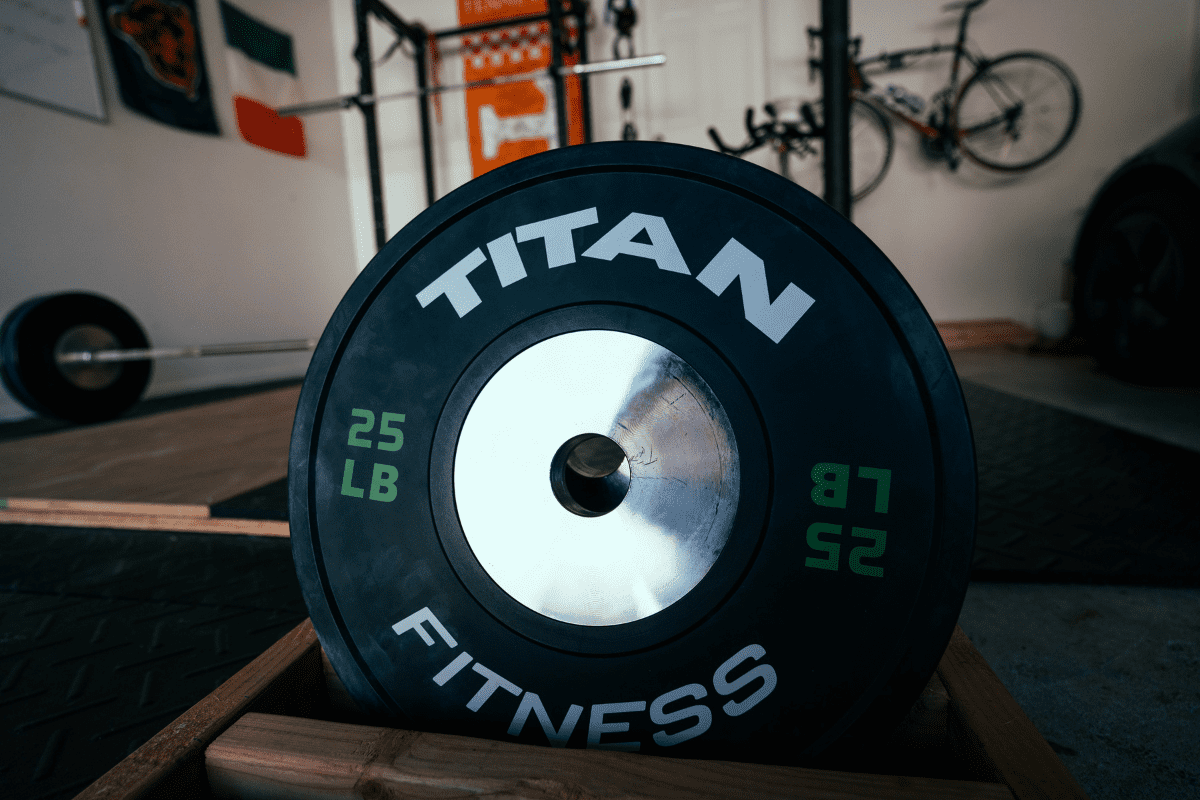How Long Do Bumper Plates Last? (Hint: Quality Matters)
Bumper plates are an expensive, but necessary addition for many home gym owners. So, figuring out how long bumper plates will last is a critical piece of information when determining how big of an investment you want to make.
Bumper plates can last anywhere from 3 or 4 years all the way up to 20 plus years. The type of bumper plate, along with the quality and the amount use all play big factors in exactly how long a particular set of bumper plates will last.
In this article, I’m going to tell you how the type of bumper plate plays a huge part in how long a bumper plate will last (no, all bumper platers are literally not the same).
I’ll also explain why you should treat your 20kg and 45lb plates differently than your lighter ones as well as answer a few frequently asked questions when it comes to taking care of your bumper plates to make them last as long as possible.
Let’s get started.
Types of Bumper Plates

There are three main types of bumper plate and depending on which you choose will potentially be the biggest decider in how long your plates last.
The three types are crumb rubber, economy plates and weightlifting bumper plates. Now, let’s take a look at each one – how long you can expect them to last and why.
Economy Bumper Plates
First off, exactly what is an ‘economy bumper plate’?
An economy bumper plate is a plate that is made from virgin rubber but comes with a thin center insert. They look nice, but these plates are the least durable of all the plates.
The main culprit for an economy bumper plate to tear up is that thin center cap. Over time (and repeated dropping) that center insert can come loose and even completely come apart from the plate itself. Once it does, the plate basically becomes a paperweight.
This is the reason why if you fully read the product description, most economy bumper plates will actually state that they are not meant to be dropped.
Why do they say this?
Because, economy bumper plates will tear up, sooner or later, if they’re repeatedly dropped. (Especially the lighter plates which I’ll touch on more below)
But, we don’t buy bumper plates to not drop them, right? So, how long will economy bumper plates actually last if they’re dropped, but otherwise well taken care of?
If it’s just you lifting in your garage gym – probably a really long time.
I’ve personally had two different sets of economy bumper plates. The first was at a smaller college where I inherited plates that began tearing up after only a couple of years. We started removing plates from the floor until eventually, we had to replace all of them.
The other was at a private training facility. Those economy plates there are still alive and going strong after 12 years.
The takeaway when it comes to economy plates is this – they look great, but they are the most likely type of plate to break down on you first.
Having said that, in the examples I just gave, those plates are being used by multiple people every single day – much more use than in a home gym.
Read More:
Crumb Rubber

Crumb rubber plates are made from recycled rubber (generally recycled tires) and are often easy to spot because they tend to be wider than virgin rubber plates.
They’re the cheapest type of bumper plate, but when it comes to durability, crumb rubber plates are likely to survive a bomb going off in your gym.
The price tag on crumb rubber plates is due to the fact that they’re visually not as appealing as virgin rubber plates and performance-wise are not as good if you’re into Olympic lifting. They’re also much wider, but that’s really only an issue if you’re squatting or deadlifting about 500+.
From a durability standpoint though, crumb rubber plates will take an absolute beating.
You still have the thin center insert which is going to give you the same potential issues of coming loose and rendering your plate useless, but in terms of the plate itself, a crumb rubber plate will last a really long time.
Weightlifting Bumper Plates
Higher-end bumper plates designed for weightlifting are easy to spot because of the thick steel center insert. The wider center ring helps the plate perform better for Olympic liftings by giving it better spin and better balance.
That thick center insert also helps keep it secure against the outer rubber of the plate.
I’ve seen plenty of thin center rings (both economy and crumb) come loose on bumper plates, I’ve never personally seen a center insert come loose on a weightlifting bumper plate.
Weightlifting bumper plates are the most expensive type of bumper plate, but they’re hands down the best bumper plates you can get. From both a durability and performance standpoint, they’re worth the investment.
And I’ve seen some old weightlifting plates. I’ve seen old Eleikos and Uesakas in college weight rooms that were over 20 years old and, other than some color fading, were still in great shape.
Think about that for a second. A generation of athletes using bumper plates day in and day out. How long do you suppose those plates will last in your garage? Forever? Most likely, yes.
45s vs Smaller Plates
As I’ve been discussing the durability of each of the different types of bumper plate, I’ve been generally referring to the 20kg, or 45lb, plates.
These plates are much thicker, and therefore much more durable than some of the lighter, thinner plates.
The most common way bumper plates break down is when smaller plates – 10lb and 15lb plates – are repeatedly dropped when on the bar by themselves.
They’re more likely to get bent, or warped which can lead to the center insert coming loose much quicker. They can also crack under the pressure of being dropped – especially if iron plates are also added on top of a smaller bumper plate.
Bumper Plate Durability FAQ

I’ve touched on a few of these points already, but I wanted to directly answer a few of the most common questions I get regarding bumper plate durability and how to properly take care of them.
Can Bumper Plates Break?
Yes. The most likely culprit of a broken bumper plate is going to be a thin center insert on an economy or crumb rubber bumper plate coming loose.
The second most likely scenario of a bumper plate breaking is a lighter plate being left on the bar by itself (or along with smaller iron plates) and being dropped repeatedly.
How Do You Maintain a Bumper Plate?
It’s really quite easy to maintain a bumper plate and it doesn’t need to be super complicated either.
Wipe down your plates once a week or after any particular workout where you got a lot of sweat on a plate. Moisture, from sweat and/or humidity, can lead to rust on the steel center cap. And rust is your enemy.
How Do You Keep Bumper Plates From Rusting?
Keep them away from moisture. Depending on where you live, this could mean investing in a dehumidifier for your garage gym. They can save you a ton of money if you live in a humid area in the summertime.
Also, like I just mentioned, if you get a lot of sweat on a plate after a workout, give it a good wipe down afterward.
For instance, let’s say you grab a plate to do weighted abs at the end of a workout. Grab a towel and wipe it down afterward. Simple as that.
Can I Leave Bumper Plates Outside?
NO. It rains outside. Humidity is outside. Under no circumstances is it a good idea to leave bumper plates outside.
Is It Okay To Drop Bumper Plates on Concrete?
I would strongly advise against this as well for multiple reasons.
First, concrete does not give or absorb force as rubber does. This means every drop is harder on not just your plates, but your barbell as well.
Two, unless the concrete is perfectly smooth, concrete is going to be much more abrasive which will scratch and ultimately tear up your bumper plates.
And, finally, you could end up doing serious damage to your concrete floor. If we’re talking about the floor of your garage or basement, you may end up with much bigger issues than your bumper plates tearing up.
At the very least I would recommend buying a horse stall mat to help deaden the blow of your bumper plates being dropped on the concrete. Personally, I do all of my Olympic lifting on a platform that sits on top of horse stall mats for extra protection.
Do Bumper Plates Last Longer Than Iron Plates?
When comparing Bumper Plates vs Iron Plates, it really depends on how well they are taken care of.
If they are taken care Iron Plates will last longer because eventually, the rubber will begin to break down well before the iron will. However, I’ve seen both types of plates last 30-plus years when they’ve been kept inside in a temperature-controlled environment and well-maintained.
On the flip side, you can ruin an iron plate pretty quickly if it’s left outside, open to the elements and allowed to rust. And, the same can be said for bumper plates as well.

Get Shredded… For Free
Get a free workout Monday through Friday, posted right here on Horton Barbell. These workouts are designed to help you get strong, in shape and look great at the beach!
Final Thoughts
Bumper plates, like most quality gym equipment really, will last you a long time if it’s properly taken care of.
So, if you’re debating on whether bumper plates are worth the investment – they are.
Assuming you use them of course. Bumper plates sitting in the garage collecting dust won’t help you make those gains that you’re trying to get. So get some bumper plates and get to work!

